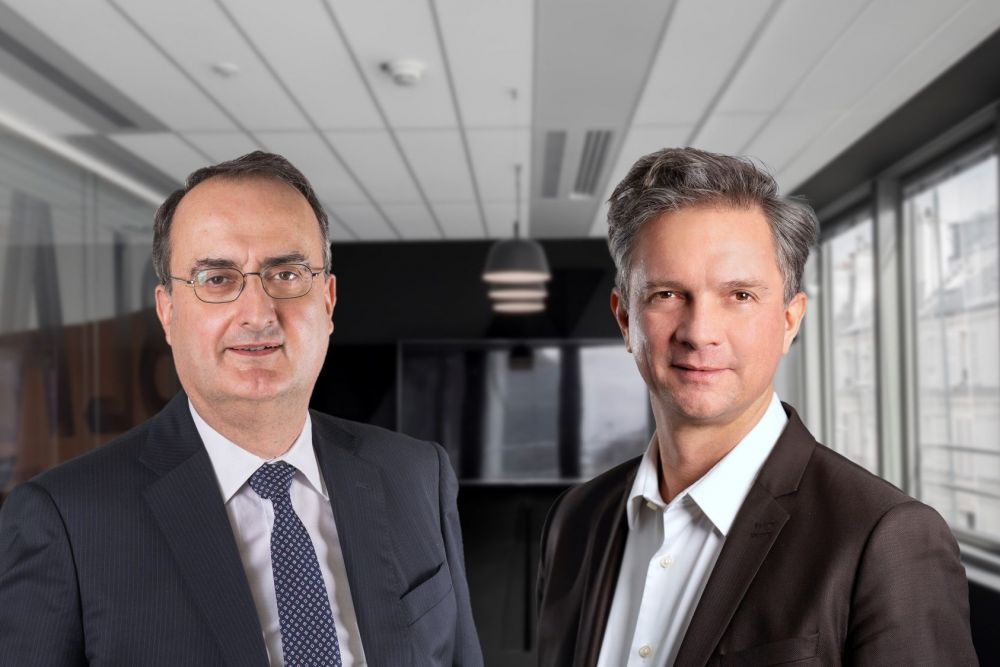- Home
- EN
- Kardham Group
- News
AI: Kardham Digital launches KD Forecast, a tool designed to anticipate workplace attendance
November 2023

Kardham Digital launches KD Forecast, an algorithm based on AI and machine learning capable of predicting, 30 days in advance and with over 90% accuracy, the occupancy of a commercial building. Operators of professional spaces will be able to rely on this tool to offer users a facilitated experience of their workspaces, while optimizing the management of said spaces in a context of rationalizing real estate costs and reducing their carbon footprint.
A paradigm shift from M² to flow analysis
The post-Covid years have seen the advent of telecommuting and flex-office, two features that have given rise to a new challenge for companies: that of having to manage an organization where the flow of people using these spaces varies every day. And in a new paradigm: whether we're talking about energy consumption or carbon footprint, the intrinsic metrics of a commercial building being relatively constant during working hours, occupancy by flow shifts the unit of account of that same building from its "capacity" to its "use". More than ever, what characterizes a building is its users, their attendance and their use.
Predicting occupancy: a central element of optimization strategies
Highlighting the number and activity of people present on site as the main variables characterizing the building is a valuable lesson: to optimize the m2 and energy consumption of their workspaces, companies will need a detailed analysis of their occupancy. This is precisely what KD Forecast offers. In addition to using data relating to surface areas, floor plans, capacity, or even Building Management System (BMS) data, KD Forecast relies on tens of thousands of building occupancy data and over 30 peripheral parameters to anticipate, with the greatest possible accuracy and time projection, the number of users who will occupy these spaces. These data include :
Attendance data: occupancy of workstations, collaborative spaces, number of people per zone, etc.
Access data: many commercial buildings are equipped with access control systems that provide reliable presence data.
HR, IT and FM data, the heart of the system data relating to users: HR repository, space planning, O365 access, etc.
Reservation data: meeting rooms, travel plans, catering, etc.
Please note that no personal data is used in KD Forecast.
KD Forecast is the result of over a year's research by Kardham Digital's R&D Data Department. Thanks to the Gradient Boosting method, the tool outperforms calculations based on simple observation of the past (time series method) by 60%, to achieve prediction accuracy of over 90% on average.
Its mathematical modeling is at the crossroads of a number of issues:
Identifying the data to be used: the ability to define, collect/produce and process them, etc.
Choosing the actions to be performed on the data: defining the rationalization of data between them, the applicable treatments, the creation of value in interactions, etc.
The use of reprocessed data: defining the choice of decision-support dashboards, contextual information devices, time depth for anticipation, linking building automation systems to actual usage, etc.
In addition to better economic and environmental optimization of workspaces, KD Forecast offers other advantages for workspace managers: adapting their site to expected traffic in terms of both services and spaces made available, anticipating periods of potential under/over-occupation to better manage attendance when necessary, taking into account the evolution of the site as the company grows or reorganizes, and so on. For users, KD Forecast promises to be a more fluid and simplified experience of workspaces, allowing them, for example, to avoid having to fill in a daily attendance declaration, which is neither motivating nor intuitive.
"All these topics around AI as an innovation enabling better building management to optimize energy consumption and/or streamline operations are absolutely not new, they've been around for over 10 years (although still not widely deployed). What is new is knowing what real leverage we have today if we want to go even further in optimizing these buildings. To do this, we need to look at what they're used for: for us, the building is a service center, that's its purpose. To optimize it, these users must be the starting point for reflection and the development of any innovation. The most important leverage effect when it comes to rationalizing m² and reducing a site's carbon footprint lies in its occupancy. This is what we wanted to do with KD Forecast: consider that the individual must now be the pivot of building data", Jérôme Hérard, Director of Digital Workplace Solutions at Kardham Digital.
"The launch of KD Forecast is further proof of our conviction that digital technology is a key area for innovation, enabling the industry to progress towards greater economic, environmental and social performance. Our vision is to make buildings increasingly autonomous, without human intervention in day-to-day management, while enhancing the user experience. To achieve this goal, the building information system must be able to predict what is going to happen in the building, so as to better anticipate the services to be provided to the occupant. Today, everything in our industry is changing very fast: operators of professional spaces, users, professions, work modes, uses. These are all needs and interests that digital technology can help bring together. This is what led to the creation of Kardham Digital over four years ago, and the starting point for each of the projects that our team of 80 technicians and engineers designs for our customers", Pascal Zératès, Managing Director of Kardham Digital.

